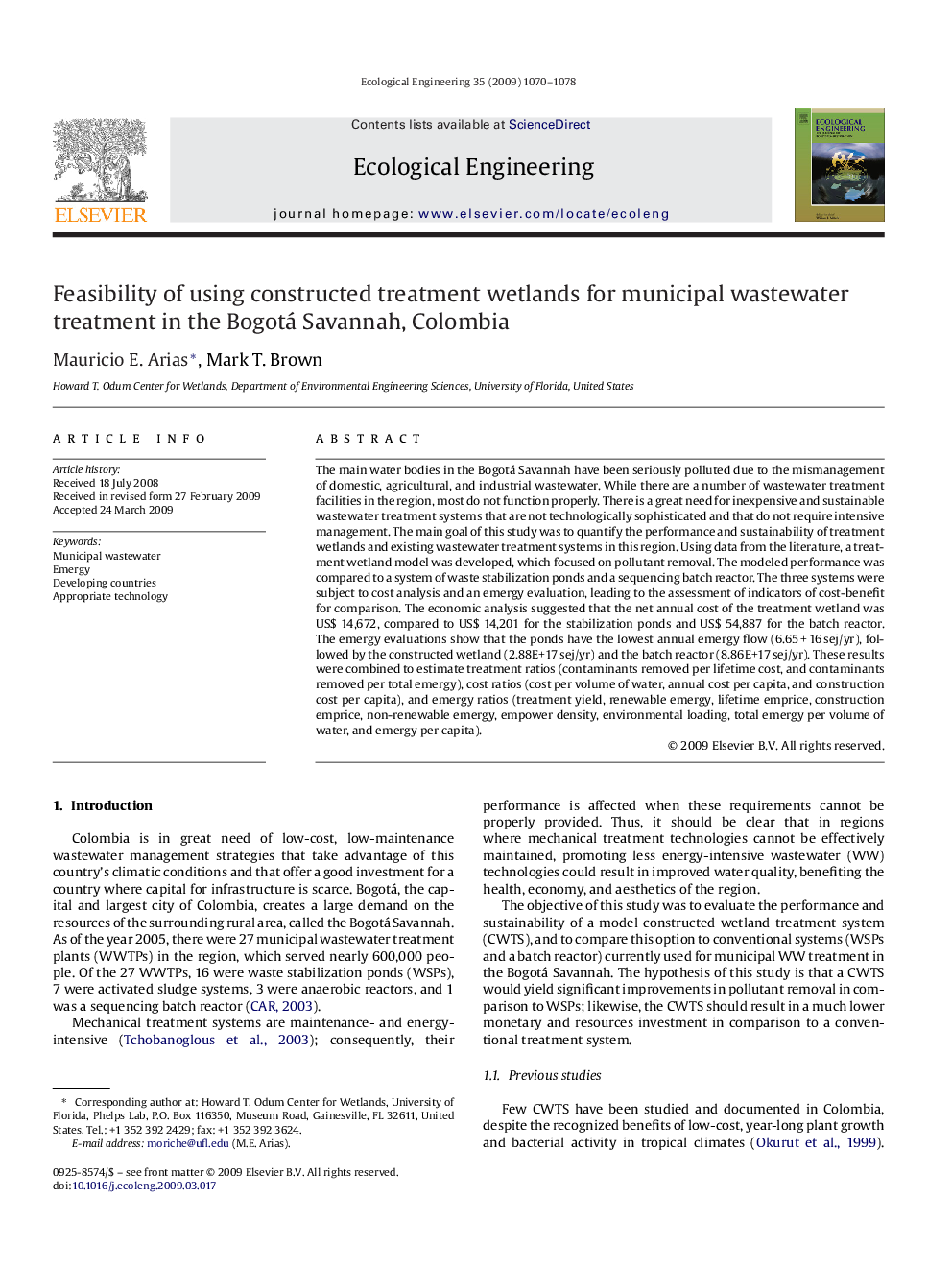| Article ID | Journal | Published Year | Pages | File Type |
|---|---|---|---|---|
| 4390885 | Ecological Engineering | 2009 | 9 Pages |
The main water bodies in the Bogotá Savannah have been seriously polluted due to the mismanagement of domestic, agricultural, and industrial wastewater. While there are a number of wastewater treatment facilities in the region, most do not function properly. There is a great need for inexpensive and sustainable wastewater treatment systems that are not technologically sophisticated and that do not require intensive management. The main goal of this study was to quantify the performance and sustainability of treatment wetlands and existing wastewater treatment systems in this region. Using data from the literature, a treatment wetland model was developed, which focused on pollutant removal. The modeled performance was compared to a system of waste stabilization ponds and a sequencing batch reactor. The three systems were subject to cost analysis and an emergy evaluation, leading to the assessment of indicators of cost-benefit for comparison. The economic analysis suggested that the net annual cost of the treatment wetland was US$ 14,672, compared to US$ 14,201 for the stabilization ponds and US$ 54,887 for the batch reactor. The emergy evaluations show that the ponds have the lowest annual emergy flow (6.65 + 16 sej/yr), followed by the constructed wetland (2.88E+17 sej/yr) and the batch reactor (8.86E+17 sej/yr). These results were combined to estimate treatment ratios (contaminants removed per lifetime cost, and contaminants removed per total emergy), cost ratios (cost per volume of water, annual cost per capita, and construction cost per capita), and emergy ratios (treatment yield, renewable emergy, lifetime emprice, construction emprice, non-renewable emergy, empower density, environmental loading, total emergy per volume of water, and emergy per capita).
